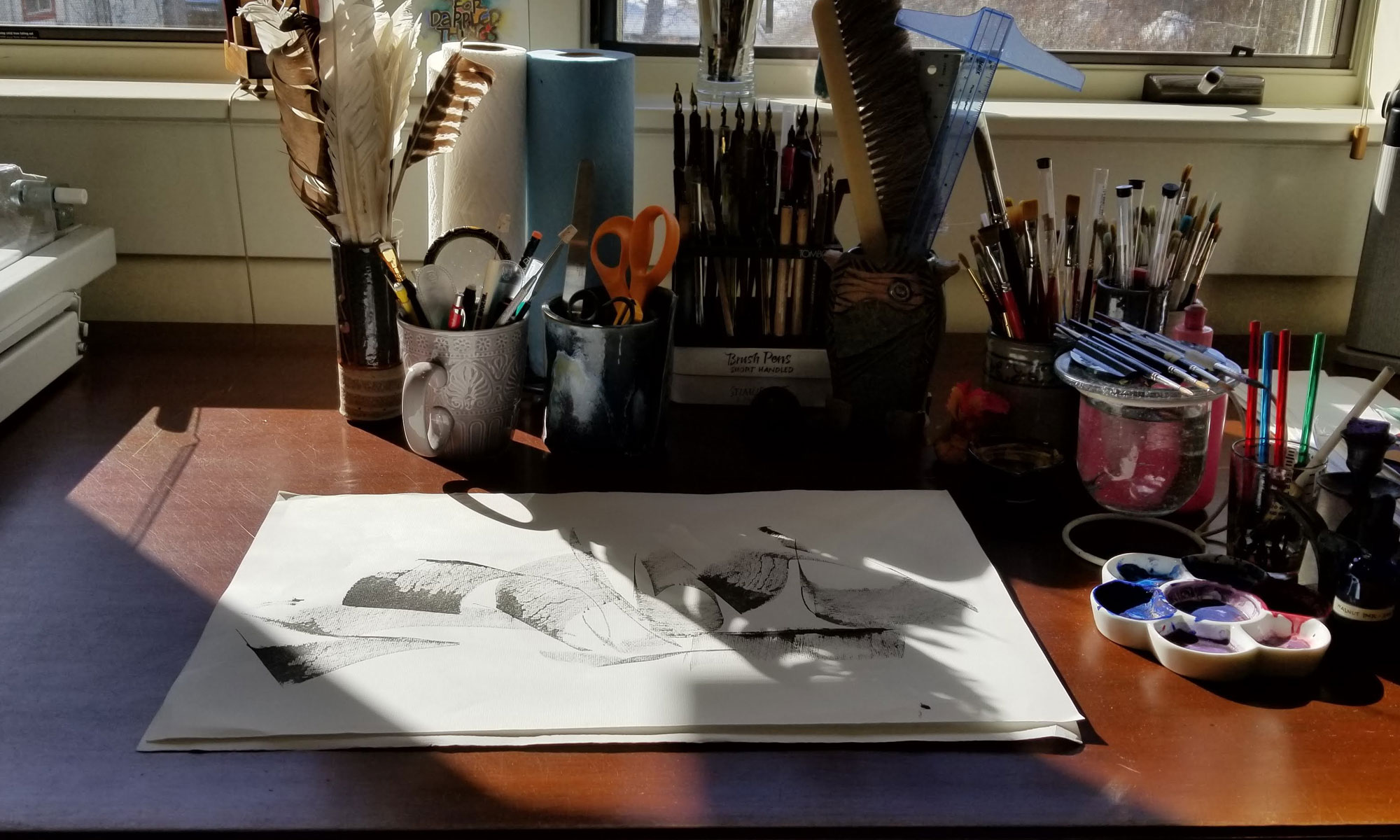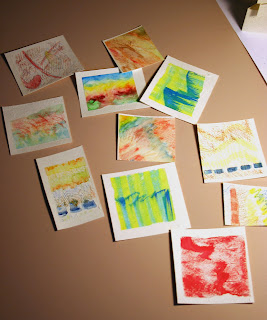 More experimenting, this time with gesso, FW acrylic inks, pencils, rubbings, and so on. Some of these have potential. Some of are duds. I wonder which ones are which …
More experimenting, this time with gesso, FW acrylic inks, pencils, rubbings, and so on. Some of these have potential. Some of are duds. I wonder which ones are which …
Traditional Stick Ink
One of the pleasures of calligraphy is handling the traditional tools and materials that have been used for centuries. I mean, I love gel pens, which have their own delightful tactile properties: the glistening of the gel as it comes out of the pen and forms a line that sits on top of the paper … but I digress. As fun as they are, the experience of writing with a gel pen on black paper, even, doesn’t hold a candle to the delight of writing with a quill and freshly ground stick ink on a piece of parchment. That’s really the point of this rambling, in case you were looking for one.
Joe Vitolo at the Ornamental Penmanship list on Yahoo Groups has drawn our attention to several interesting YouTube videos having to do with stick ink:
In the first video, Haiying discusses what makes a stick ink good or not so good.
In the second video, she talks about how to protect your stick ink during use, and more about the qualities of stick inks.
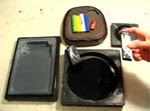 In the third video, Hirokzu Kosaka talks about how stick ink is made.
In the third video, Hirokzu Kosaka talks about how stick ink is made.
Scraps
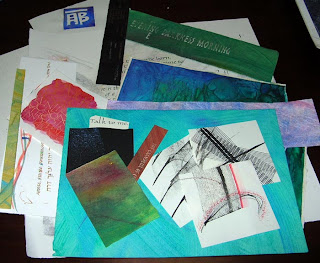 After a series of tight deadlines, the stacks of art paper in my studio are piling up and weighing me down. I’ve begun organizing all this paper, and the scope of task is commensurate with Hercules’ in the Augean stables. Although my studio smells better (than the stables).
After a series of tight deadlines, the stacks of art paper in my studio are piling up and weighing me down. I’ve begun organizing all this paper, and the scope of task is commensurate with Hercules’ in the Augean stables. Although my studio smells better (than the stables).
Actually, if you’re a little under the weather, as I have been, it’s rather pleasant to sort through the scraps of paste paper, calligraphy, watercolor washes, color studies, off cuts and so on. It stimulates all kinds of ideas … which makes it harder to throw anything away. I look at a 2″ scrap of interesting marks and think: “That would go well in a book whose theme is …” and “That could be the anchor in a collage on …”
Here’s a display of some of the keepers. To give you an idea of scale: The white squares at the lower part of the picture are about 3″ square.
The big question is how to organize them. I don’t have a final answer. This time I sorted them into plastic bags by general size and shape. It’s no good keeping papers together by technique — paste painting, watercolor, calligraphy, mark-making — because of the smaller smaller items get lost between the bigger ones.
Like loose change, my inventory level of paper scraps is constantly being adjusted. No inventory, and I’ve got to start from scratch for even a little 1/2″ block of orange-red, say, that will “make” the piece. Too much inventory, and every project is overwhelming in its possibilities. Way too much inventory, and I might as well have none because I don’t even want to open the box.
Gum acacia and dried pomegranate
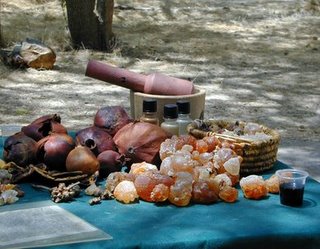
In 2004, we visited Neot Kedumim, a “Biblical Landscape Reserve”. The stated purpose of Neot Kedumim is to “re-create the physical setting of the Bible in all its depth and detail. ” It was a very interesting place, not just growing the plants and products of Biblical Israel but often also showing how they were processed. Visitors could participate in demonstrations which showed, for instance, each of the steps in which wheat growing in the field was harvested, threshed, and ground into flour. The tools were often visually luscious.
There a scribe was demonstrating how some of the materials produced were used to write scrolls. We each got a shot at writing with the homemade ink and reed pens on an interesting but unsized piece of paper. (Of course, our poor efforts couldn’t compete with the scribe’s samples, which he neglected to explain were written on real parchment using a quill, but what are you going to do? Showmanship, eh?) This photo shows the part of his table which features gum acacia and dried pomegranates most prominently. 
